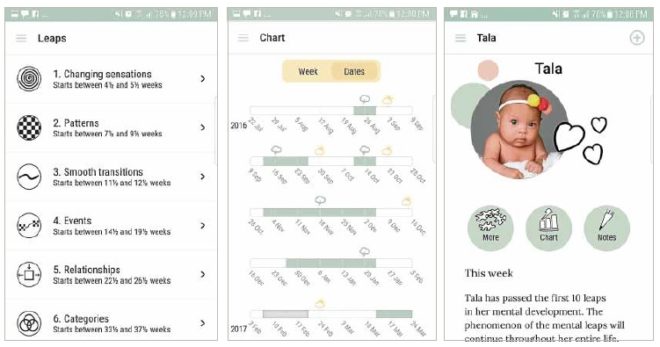
Babies cry when they are hungry, when their nappies are wet, when they are uncomfortable or want to sleep. Sometimes they appear to cry for no reason at all. The incessant crying is enough to drive nuts their sleep-deprived
parents.
The fussy period can go on for days, or even weeks. Breastfeeding babies often cluster feed during this time. Cluster feeding is when a baby feeds every hour, or could latch to the mother’s breast for hours on end. It’s exhausting and emotionally draining, but it is something that breastfeeding moms learn to cope with. Fussy babies often want to be held close, and are more clingy around this period.
Then, just when you think that the crankiness will last until preschool, it ends as abruptly as it starts—only to return after a few weeks.
Research has found that all babies go through a difficult period at around the same age. Dr. Hetty van de Rijt and Dr. Frans Plooij call this fussy period the “wonder weeks.” They refer to crying, clinginess and crankiness as the three big Cs, and a sign of mental leap.
Leaps are mental progress milestones that babies achieve. This is when they perceive things they previously were unable to. This is the time to introduce a new activity to your child to help the baby learn a new skill.
Personalized
From the two doctors’ research, a mobile app called The Wonder Weeks was developed. It offers a guide to parents on what activities will be appropriate for an infant’s specific age. There are a total of 10 leaps in the first 76-and-a-half weeks of a baby’s life.
The app can be personalized for parent and baby. The name of the child can be inputted into the articles and information. The Wonder Weeks asks for the due date instead of the actual date of birth. They say it is because mental age is linked to the date of conception, not the date of birth. This also applies to preemies and twins.
Its most appealing feature is a chart that shows a calendar of leaps. The calendar plots the days when the baby will be fussy, and the days when he/she will be all rainbow and sunshine. It’s especially useful when planning for a family trip.
But more than that, it explains the mental progress that the baby is experiencing in the specific period. For example, at 37 weeks or eight-and-a-half months, a baby can categorize objects, and will appear methodical. At this age, babies are the young scientist of your household, often investigating whatever they hold and see.
The abilities they develop are also broken down in the app. At this age, babies will show interest in the mirror. They will also play peek-a-boo by themselves. The app enumerates the signs of the leap like jealousy, nightmares and being sweet.
The app suggests introducing the concept of rough and gentle to the baby, and reading picture books that have various materials in them. However, they also tell you that it will take one or two more leaps before the baby can master a skill.
Each leap comes with a one-minute video that explains it, shows what actions to expect from the baby, what activities to do with the child, and how the baby sees the world.
The app is easy to navigate and use, but it also comes with a tutorial on how to use it. You can also keep notes within the app. You set it up so that it will send you a notification when a new leap is about to start. It’s a good way to support your child’s growth.
The Wonder Weeks is available in PlayStore and App Store.